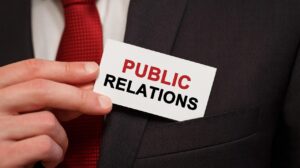Anchoring is one of the most evocative and powerful concepts in negotiation. Learn how to use it wisely and you could achieve more value than you thought possible.
The article was written with the help of Nick Hunter, a Senior consultant at The Gap Partnership.
I am fascinated by human nature. And human nature can tell us so much about negotiation. Human beings are creatures of habit and our behaviour is often predictable, hence the growth in behavioural economics – a method of economic analysis that applies psychological insights to human behaviour to explain the decisions we make. Let’s consider our behaviour when it comes to spending our hard earned cash…
A recent ruling by the UK Advertising Standards Authority has banned secondary ticketing agencies (such as Viagogo and StubHub) from listing an initial price but then adding heavy fees at the end of the buying process. The ASA’s Chief Executive, Guy Parker said, “Many of us will recognise the frustration of being happy with the initial price of tickets only to be stung by hefty fees when we come to book.”
It’s the same feeling we get when booking low-cost airline tickets. Indeed, just recently I read that travel company Megabus has been banned in the UK from using ads promising £1 seats, after the company admitted as little as one seat per bus was available at that price. The message from the ASA is simple and clear: ‘The price you see at the start should be the price you pay at the end.’
Anchoring bias
Anchoring bias is a cognitive bias that describes the human tendency to rely too heavily on the first piece of information offered (the “anchor”) when making decisions. This bias can be seen in many different areas of life, including negotiation.
In negotiation, anchoring bias can be used to an advantage by the party who makes the first offer. The first offer sets the anchor for the negotiation, and the other party will often be reluctant to deviate too far from that anchor. This means that the party who makes the first offer can often get a better deal.
However, anchoring bias can also be used against you in negotiation. If the other party makes the first offer, and that offer is too high, you may be anchored to that offer and be less likely to get a good deal.
How to counter anchoring bias in negotiation
There are a few things you can do to counter anchoring bias in negotiation:
- Flinch: If the other party makes a high offer, don’t be afraid to react negatively. This will help to break the anchor and allow you to negotiate from a more objective position.
- Counter with your own anchor: If you are the first to make an offer, make sure that it is a reasonable offer. This will help to set the anchor for the negotiation and make it less likely that the other party will be able to anchor to an unreasonable offer.
- Set a clear breakpoint for yourself: Before you start negotiating, set a clear breakpoint for yourself. This is the point at which you are willing to walk away from the negotiation. Knowing your breakpoint will help you to stay focused and avoid being anchored to an unreasonable offer.
- Do your research: Before you start negotiating, do your research and understand the market value of the item or service you are negotiating for. This will help you to avoid being anchored to an unreasonable offer.
- Ask questions: During the negotiation, ask questions to understand the other party’s motivations and interests. This will help you to understand why they made their initial offer and to make a counteroffer that is more likely to be accepted.
Other considerations
In addition to the above, there are a few other things to consider when trying to counter anchoring bias in negotiation:
- The relationship between the parties: If you have a good relationship with the other party, they may be more likely to be open to your counteroffers. However, if you have a poor relationship, they may be more likely to stick to their initial offer.
- The context of the negotiation: The context of the negotiation can also play a role in anchoring bias. For example, if the negotiation is taking place in a high-pressure environment, the other party may be more likely to be anchored to their initial offer.
- The culture of the other party: The culture of the other party can also play a role in anchoring bias. For example, in some cultures, it is considered rude to reject an initial offer. In these cultures, the other party may be more likely to stick to their initial offer, even if it is unreasonable.
By understanding anchoring bias and how it can be used in negotiation, you can improve your chances of getting the best possible outcome. However, it is important to be aware of the potential risks of using this bias, and to use it ethically.





